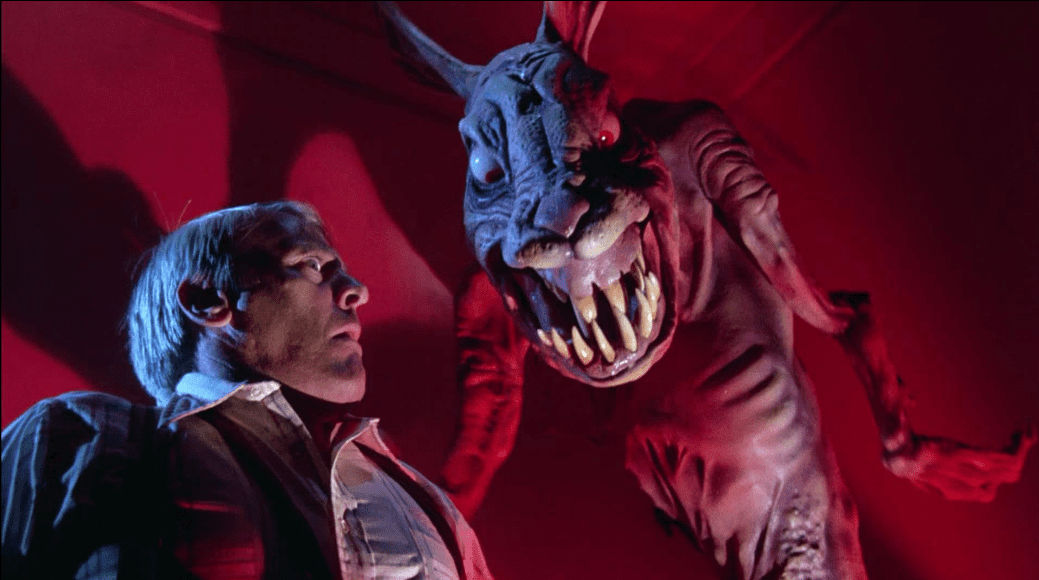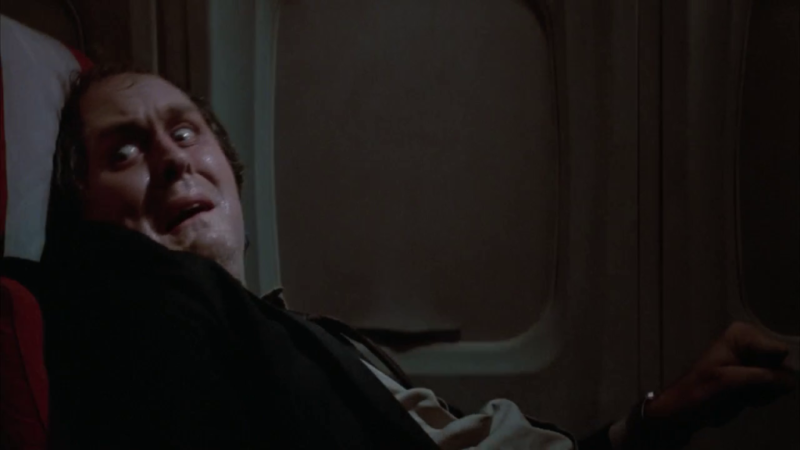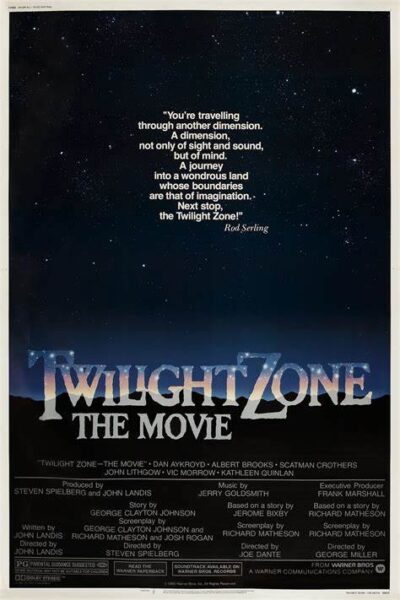Twilight Zone: The Movie is a science fiction/horror anthology film released in 1983. Based on the popular television series The Twilight Zone, created by Rod Serling in the 1950s, this 1980s version begins in a classic way. In a great prologue directed by John Landis, two men (played by Dan Aykroyd and Albert Brooks) are on a boring road trip. To keep things interesting and possibly prevent the driver from getting sleepy, they recap old TV show themes and storylines from old episodes of The Twilight Zone (which also makes the movie self-aware or “meta”).
It already taps into the nostalgia aspect of the experience. They also play a daring game where they turn off the headlights while the car is in motion. However, things take a bit of a turn after Aykroyd’s character says, “Do you want to see something really scary?” For me, this is still one of the best moments in the film, as it just captures a weird energy and the characters seem like people you could meet anywhere and just have a regular conversation with.
Wanna See Something Really Scary?
The implication is that, even with these two ordinary characters, a truly disturbing and bizarre event lurks just beneath the surface. Though it’s a bizarre scene, if you saw it as a kid, it might better help you prepare for the freak events of life – those people and circumstances that come out of nowhere and threaten to hit you like a ton of bricks. And here’s what’s great about it: Because it’s an anthology film, it’s an even more guilt-free experience to say, “Well, I liked that part, but not this other one.”
There’s less of a commitment needed to watch this film as a whole because it’s technically not set up that way! In fact, back in the day, it’s absolutely the case that some of us fast-forwarded through segments on the VCR, to match their preferences and “get to the good parts.”
The Main Stories of Twilight Zone: The Movie (1983)

Aside from the intro, the film features four separate main segments, each directed by a different filmmaker, which makes this a true mixed-bag anthology film. The four segments of Twilight Zone: The Movie are:
“Time Out” (Segment directed by John Landis): Inspired by the 1961 episode “Back There,” this segment follows a racist man (Vic Morrow) who discovers himself in various time periods, including Nazi Germany and the Vietnam War, experiencing the fears and prejudices of the people he once discriminated against. Given that Rod Serling was known for anti-racist messaging in the original series, it only made sense to include a story like “Time Out,” where a man feeling oppressed for not getting every opportunity he feels uniquely entitled to, ends up facing the historical oppression he would either ignore or downplay.
“Kick the Can” (Segment directed by Steven Spielberg): Set in a retirement home and based on a 1962 episode of the original series, this segment tells the story of an elderly man (Scatman Crothers) who convinces his fellow residents that they can regain their youth by playing a game of kick the can (a child’s game basically like “tag” or “it”). It explores themes of aging and the power of imagination. Personally, I consider this the weakest segment of the whole movie, even though I get what it’s trying to do. It just feels out of place in a film that otherwise has dark themes. Perhaps “Kick the Can” proves that some things are better as standalone experiences, rather than paired with other stories in a movie.
“It’s a Good Life” (Segment directed by Joe Dante): Adapted from a classic 1961 episode, this segment revolves around a young boy, Anthony (Jeremy Licht) with godlike powers who terrorizes his “family,” bending reality to suit his whims. Kathleen Quinlan stars as Helen Foley, a schoolteacher type and Anthony’s latest prospective family member. You also have great appearances from Kevin McCarthy, Dick Miller, and Nancy Cartwright (the voice of Bart Simpson), whose character Ethel has one of the most memorable scenes of the movie (though the scene with Anthony’s “sister” Sara, played by Cherie Currie, is another standout moment).
“Nightmare at 20,000 Feet” (Segment directed by George Miller): Also based on a popular 1963 episode from the original series, this segment features a man (played by John Lithgow) who becomes increasingly paranoid during a flight when he believes he sees a gremlin on the wing of the plane tampering with the aircraft. For some, this may be the definitive version of the “Nightmare at 20,000 Feet.”

Final Thoughts, and Acknowledging a Tragedy
Twilight Zone: The Movie was a financial success that received mixed reviews upon its release, with critics praising some segments while finding others lacking. If you watch it with others, there’s a solid chance someone will, at some point, defensively say: “Well, I liked it.” Unfortunately, the film is also notable for a tragic incident that occurred during its production, and it goes beyond actors merely suffering for art’s sake. During the filming of the “Time Out” segment directed by John Landis, a helicopter accident took place, resulting in the deaths of actor Vic Morrow and two child actors, Myca Dinh Le, and Renee Shin-Yi Chen.
The incident led to a significant controversy and subsequent legal proceedings that became a bit of a milestone in the history of safety standards for filmmaking. Despite the controversy, which deservedly tarnishes the film’s reputation to a degree, Twilight Zone: The Movie remains an important part of the Twilight Zone franchise and serves as an adequate (if not amazing) homage to the original series.
Though some segments will likely be liked more than others, the film contains some of the rawness of the original storylines while having a better production value overall. A person might see the movie and the original series as throwback stuff, but I think it still holds up well today, even when trying to set nostalgia feelings aside.
It explores themes of morality, human nature, and the unexpected twists of fate that characterized the television show. Burgess Meredith does a decent job of narrating, though Serling’s skills are basically impossible to match. The Twilight Zone will never quite feel the same without his presence, but this movie does its best to make up for that.

What are your thoughts on Twilight Zone: The Movie? Let us know in the comments!
 PopHorror Let's Get Scared
PopHorror Let's Get Scared



